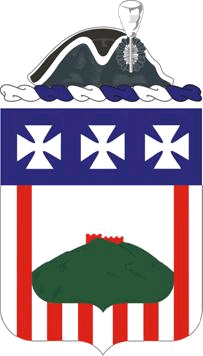First American Regiment facts for kids
The First American Regiment was the first regular army infantry unit in the United States. It was formed after the American Revolutionary War. This regiment was also known by other names like Harmar's Regiment.
It was created in August 1784. Its main job was to protect the American frontier. This was the wild land west of the Appalachian Mountains. In 1815, after the War of 1812, it joined with other regiments. They formed the 3rd Infantry Regiment.
Forming the Regiment
After the American Revolution ended in 1783, the Congress decided to break up most of the army. General George Washington stepped down as the army's leader.
Washington suggested keeping a small force. This force would guard the western frontier and the borders with Canada and Spanish Florida. But the new country did not have much money. So, it relied a lot on local citizen soldiers called militia.
Most of the old army was disbanded by late 1783. But one regiment and an artillery company stayed. On June 2, 1784, Congress ordered the army to disband again. They believed that having a large army during peacetime was not good for a free country.
However, on June 3, 1784, Congress passed a new plan. They decided to form one regiment. It would have eight companies of infantry (foot soldiers) and two of artillery (cannon soldiers).
Thomas Mifflin, the president of Congress, chose Josiah Harmar to lead this new regiment. Harmar became the regiment's commander on August 12, 1784. The regiment's main job was to staff frontier forts. They also protected against attacks from Native American groups. Their first base was Fort McIntosh in Beaver, Pennsylvania.
In 1786, Secretary of War Henry Knox sent Colonel Harmar to Vincennes. He was there to bring order to the area. Harmar left 100 soldiers under Major Jean François Hamtramck. They built a new fort and worked deep in the Ohio Country.
Northwest Indian War
The First American Regiment changed its name to the Regiment of Infantry on September 29, 1789. This happened when the United States Army was officially created under the Constitution of the United States.
In 1790, Harmar led 320 regular soldiers and over 1,000 militia. This was part of the Harmar campaign. It was a very difficult mission. The Regiment of Infantry lost more than 70 soldiers.
On March 3, 1791, Congress reorganized the U.S. Army. It now had two infantry regiments. The First American Regiment became the 1st Infantry Regiment. Harmar remained its commander.
This regiment was the main force under Major General Arthur St. Clair. They tried to destroy Kekionga. This was a large Miami village. It was central to a group of Native American nations called the Northwestern Confederacy.
Major Jean François Hamtramck led the 1st Infantry for a short time. His second-in-command was Major David Ziegler.
On November 4, 1791, Native Americans led by Miami Chief Little Turtle attacked. This event is known as St. Clair's defeat. It was the worst loss for the U.S. Army against Native Americans in history.
After this defeat, the Army was reorganized again in 1792. It became the Legion of the United States. Major General Anthony Wayne led it. The First Infantry became part of the 1st Sub-Legion. Hamtramck was promoted to lead it.
Under Wayne, the Legion trained a lot. Then they marched north to face the Native American confederacy. The Legion won the Battle of Fallen Timbers in 1794. The trading post at Kekionga was rebuilt and named Fort Wayne. The First Sub-Legion, led by Hamtramck, was stationed there. William Henry Harrison, who later became the 9th President of the United States, was a young officer in this unit.
Later Service and Joining Forces

In October 1796, the Legion of the United States went back to being called the United States Army. The 1st Sub-Legion became the 1st Infantry Regiment again.
In 1803, Captain Meriwether Lewis of the 1st Infantry got a special job. President Thomas Jefferson chose him to lead the Corps of Discovery. This group explored the new lands the United States had bought. This journey is known as the Lewis and Clark Expedition.
During the War of 1812, the 1st Infantry fought in Upper Canada (now Ontario province). They were part of battles like Chippawa and Lundy's Lane. They also helped in the Siege of Fort Erie.
In October 1815, the 1st Infantry joined with several other regiments. They formed the 3rd U.S. Infantry Regiment (The Old Guard). The 3rd Infantry is recognized as the oldest regular army regiment in the United States Army. This is because its history goes back to the First Infantry Regiment in 1784.
Notable Members
Some important people who served in the First American Regiment include:
- Major General and President William Henry Harrison
- Brigadier General Zebulon Pike
- Captain Meriwether Lewis


